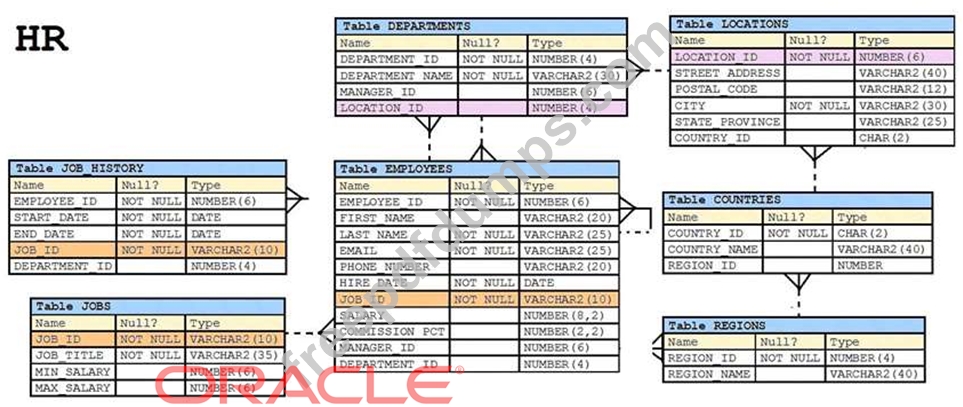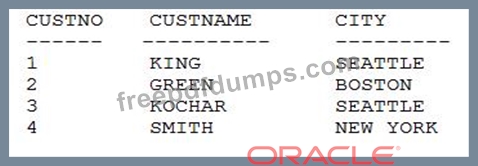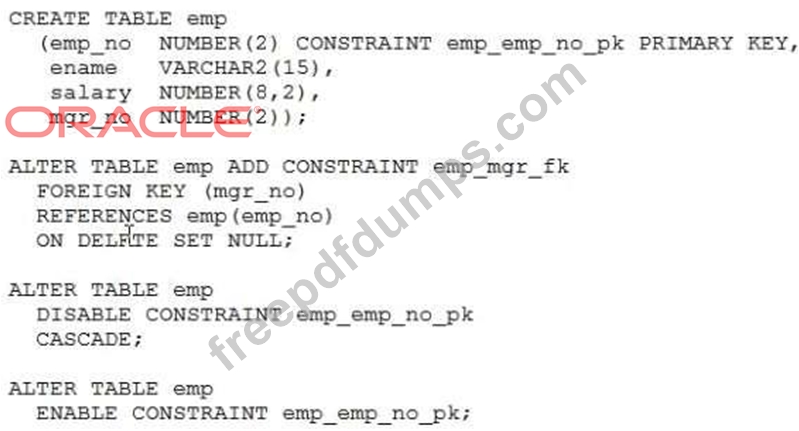1z1-071 Exam Question 156
View the Exhibit and examine the description of the EMPLOYEES table.

You want to calculate the total remuneration for each employee. Total remuneration is the sum of the annual salary and the percentage commission earned for a year. Only a few employees earn commission.
Which SQL statement would you execute to get the desired output?

You want to calculate the total remuneration for each employee. Total remuneration is the sum of the annual salary and the percentage commission earned for a year. Only a few employees earn commission.
Which SQL statement would you execute to get the desired output?
1z1-071 Exam Question 157
Examine the data in the CUSTOMERStable:

You want to list all cities that have more than one customer along with the customer details.
Evaluate the following query:

Which two JOIN options can be used in the blank in the above query to give the correct output? (Choose two.) LEFT OUTER JOIN

You want to list all cities that have more than one customer along with the customer details.
Evaluate the following query:

Which two JOIN options can be used in the blank in the above query to give the correct output? (Choose two.) LEFT OUTER JOIN
1z1-071 Exam Question 158
These are the steps for a correlated subquery, listed in random order:
The WHERE clause of the outer query is evaluated.
A candidate row is fetched from the table specified in the outer query.
This is repeated for the subsequent rows of the table, until all the rows are processed.
Rows are returned by the inner query, after being evaluated with the value from the candidate row in the outer query.
Which is the correct sequence in which the Oracle server evaluates a correlated subquery?
The WHERE clause of the outer query is evaluated.
A candidate row is fetched from the table specified in the outer query.
This is repeated for the subsequent rows of the table, until all the rows are processed.
Rows are returned by the inner query, after being evaluated with the value from the candidate row in the outer query.
Which is the correct sequence in which the Oracle server evaluates a correlated subquery?
1z1-071 Exam Question 159
You must create a SALES table with these column specifications and data types: (Choose the best answer.) SALESID: Number STOREID: Number ITEMID: Number QTY: Number, should be set to 1 when no value is specified SLSDATE: Date, should be set to current date when no value is specified PAYMENT: Characters up to 30 characters, should be set to CASH when no value is specified Which statement would create the table?
CREATE TABLE sales(
CREATE TABLE sales(
1z1-071 Exam Question 160
Examine these SQL statements which execute successfully:

Which two statements are true after execution?

Which two statements are true after execution?

